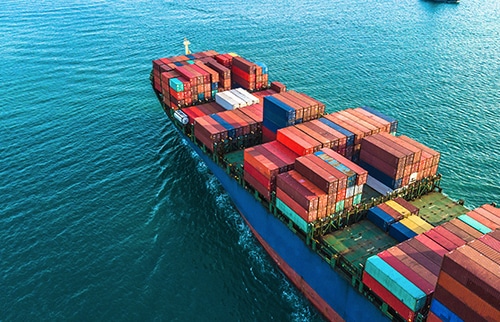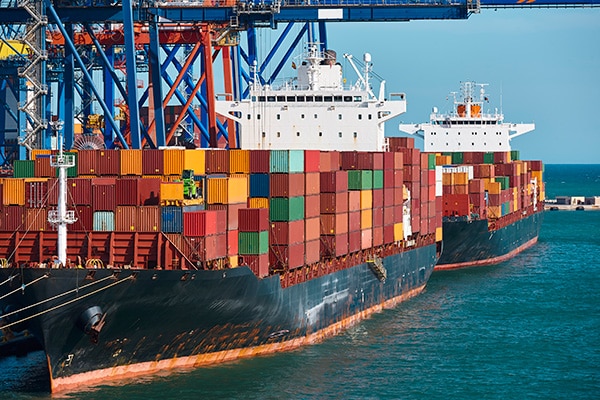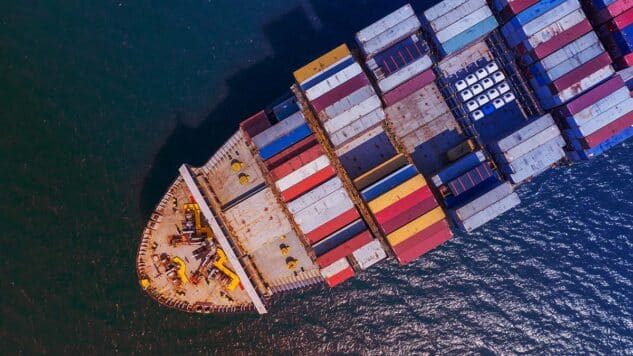For many shippers, finding how much ocean freight rates are can be difficult, especially if they do not have a dedicated shipping partner. These are basic freight charges for the movement of containers from Port A to Port B. In this article, we will break down how ocean freight rates are normally calculated.
Understanding Ocean Freight Rates vs Freight Quotations
An ocean freight rate is the costs of transporting shipments directly by the sea. Freight quotations are the estimated summary of charges during the entire transportation process, including pick-ups, trucking, warehousing…etc. Not all shipments are multimodal, but when shippers ask for a freight quote everything will be included.
Freight quotations may be divided into three sub-groups. They are pre-carriage, carriage, and on-carriage. Each group possesses its own list of common fees. The mode of transport can be Door-to-Door, Port-to-Port and other associated services. This may lead to shippers or consignees paying for many other services.

Ocean freight charges normally apply to the “carriage” process but can also include the pre- and on-carriage stages.
The pre-carriage process refers to any inland movement that takes prior to loading up a shipping container at a port. This can occur at the same location of the port or somewhere close.
On-carriage refers to any charges applied during the movement that takes place after the container is discharged at a port. This process can be carried out by carriers using road or rail modes, or by a merchant. A major service charge applied to both is customs clearance. This is usually handled by a customs broker.
Below we will dive into the Carriage charges – the charges applied and calculated together for the ocean freight rates.
List of Carriage Charges Contributing to Ocean Freight Rates
There are hundreds of carriers around the world offering ocean freight services. Depending on the contract of carriage and the service type mutually agreed on, each carrier will have their own charges for the carriage process. The final rates are sometimes quite similar for services but can be influenced by many factors including pricing competitiveness, long-time partnerships, and newly adopted technology.
Below are some of the main factors contributing to the overall ocean freight rates.
BUNKER ADJUSTMENT FACTOR (BAF)
This charge is used to compensate steamships for the ever-fluctuating fuel costs. This can also be referred to as “Fuel Adjustment Factor” or FAF.
LOW SULPHUR SURCHARGE
Charge for the use of fuel that has lower emissions.
BILL OF LADING FEE
Exactly how it sounds, this fee is applied for the processing of the Bill of Lading on behalf of the client.
EXPORT SERVICE
Service fees that may be charged by the exporting agent.
EQUIPMENT IMBALANCE SURCHARGE (EIS)
This surcharge is imposed by shipping lines to recover costs related to removing empty containers from the destination country. When a country has no use for these imported containers, they must be removed to recover space.
EQUIPMENT REPOSITIONING SURCHARGE (ERS)
This fee is imposed when a shipper’s request for carriers to make empty containers available to be moved from one location to another.
PIRACY SURCHARGE
This charge is applied to compensate shipping companies for the ever increasing costs for avoiding and regulating piracy & hijacking.
TERMINAL HANDLING CHARGES – DESTINATION
These charges are applied to the handling of shipments at the destination port.
TERMINAL HANDLING CHARGES – ORIGIN
These charges are applied to the handling of shipments at the origin port.
SHIPPING CONTAINERS
Charges for shipping containers vary by sizes, how much of the container is being used, and if they are going local or international travel. Sizes vary by 20-feet or 40-feet normally but can see upwards to 56-feet. This is all dependent on what is needed to be shipped.

Shipping containers range in size and charged by usage, loading/unloading and removal from port after delivery.
HOW TO GET THE BEST OUT OF OCEAN FREIGHT RATES
When a freight quotation is sent out, it is up the shipper to determine if they want to agree and begin a contract with the shipping company. Normally there will be no room for additional dispute because the carriers are very clear in their offering.
Therefore, it is extremely important for a shipper to read and understand all the terms and conditions set by the carrier. This will help ensure all charges for ocean freight rates are agreed on and no additional costs will accumulate.
If a shipper understands the full scope of the carriage charges and how the ocean freight rate came to be, then there will be no ambiguity. It is prudent for shippers to go through each and every item of the freight quote to understand the costs, especially for international transport.
Remember, shippers are choosing the carrier, so they are entitled to ask them and explain all charges in detail if need be.
If you are a shipper looking for ocean freight services, check out how Omni Logistics has fulfilled the needs of shippers in this arena. We also provide very detailed freight quotes for shipments of all sizes to any major location in the world.



